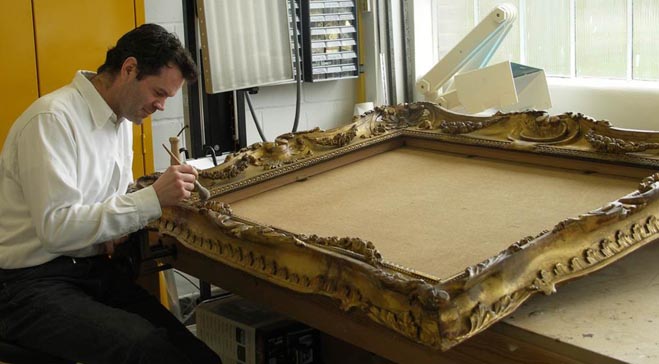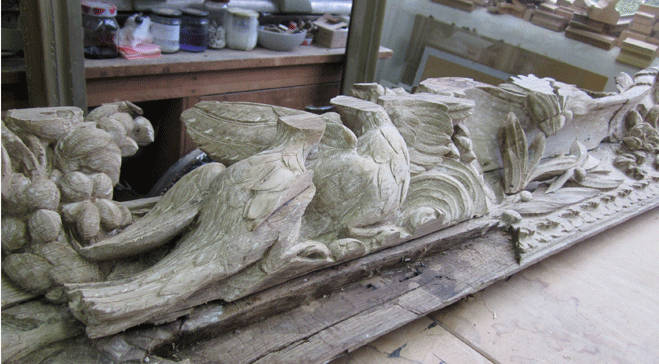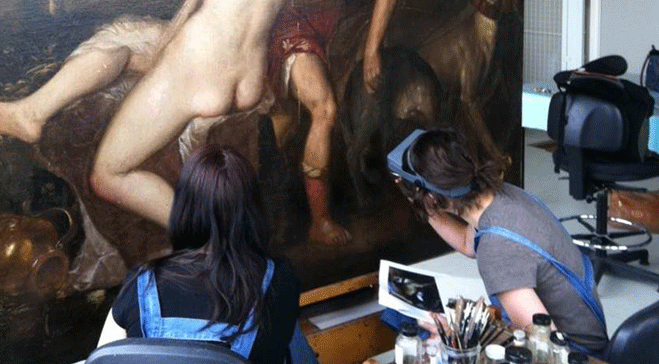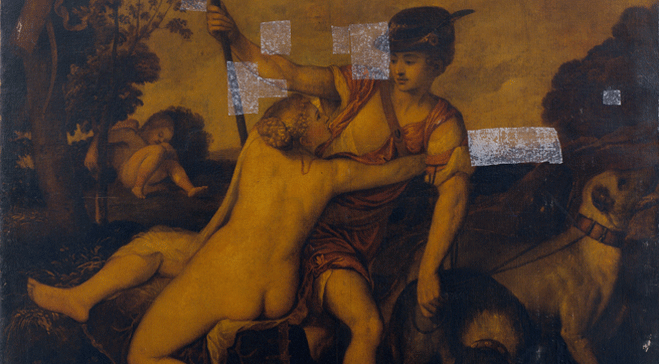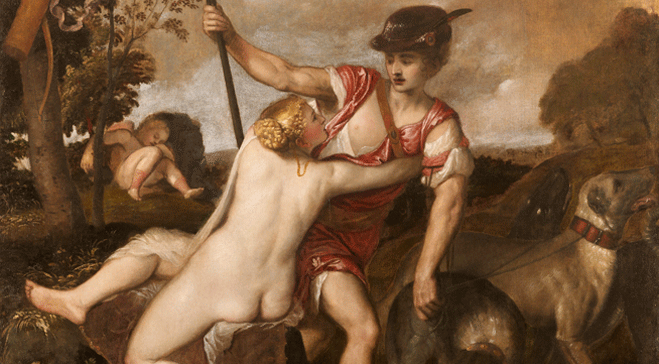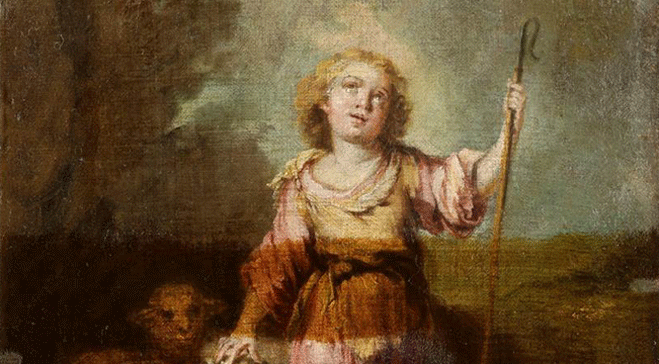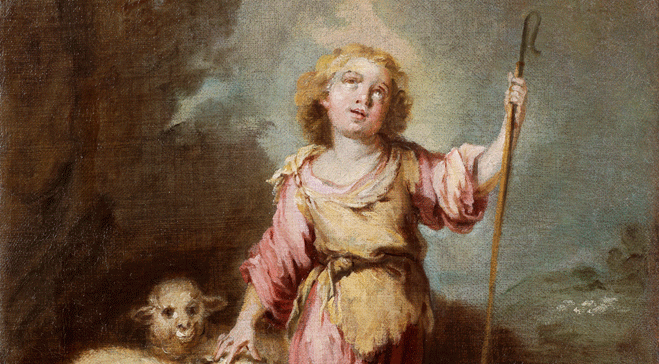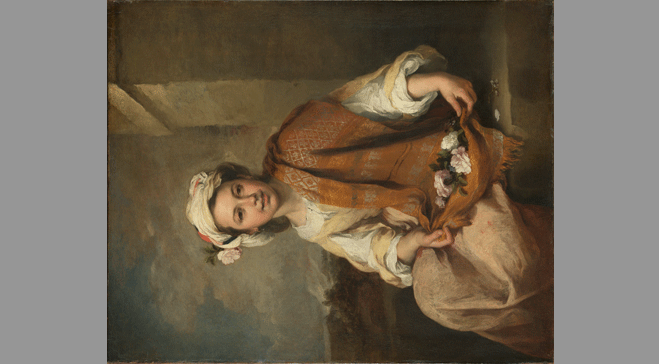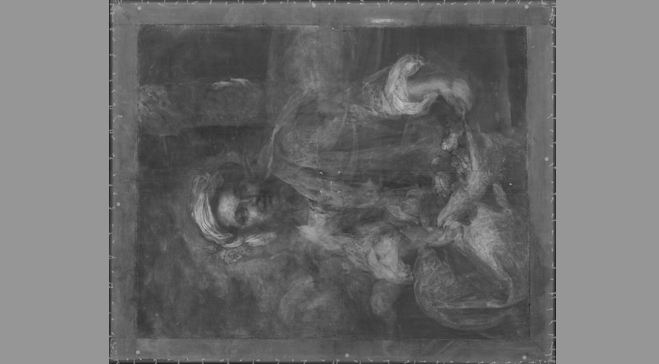Conservation
The Gallery’s curators work closely with paintings conservators to ensure the preservation and research of our world-class collection.
Our paintings, which span from the 15th to the 19th centuries, naturally change over time and become vulnerable to the variety of risks they face over their long histories. Every year paintings in our collection require conservation, whether due to the aging of canvas and pigments, or to the adverse effects of old damage and restoration work.
Venus and Adonis, Workshop of Titian
The removal of layers of encrusted dirt and yellowed varnish from the surface of a painting can bring back the freshness of the painter’s original colour scheme and restore clarity to the composition. Once Venus & Adonis had been cleaned by our conservators, the delicate luminosity of Venus’s flesh tones and the exuberance of Adonis’s hounds were visible once again, indicating that the painting was created in Titian’s studio and within his own lifetime.
Technical Research & Ground-breaking Discoveries
Our curators and conservators collaborate closely with scientists to uncover fascinating insights into the particular techniques employed by artists in the collection, from Murillo to Rubens.
The Infant Christ as the Good Shepherd, After Bartolomé Estéban Murillo
Technical analysis of paint samples can enable us to discover the exact pigments and media used by artists, and equally important, the way in which they used them.
Our founder Desenfans acquired The Infant Christ as the Good Shepherd thinking it was a preparatory oil sketch or a smaller autograph version of one of Murillo’s most famous compositions. However, Prussian Blue was discovered in the sky area, a pigment not invented until c.1706 - definitive proof that this painting could not have been painted by Murillo, who died in 1682, but is more likely to be by a French painter who would have seen the original in a private collection in Paris.
The Flower Girl, Bartolomé Estéban Murillo
An X-ray of The Flower Girl revealed a startling image beneath the paint surface. When the painting is positioned on its side, the bottom half of the figure of the Virgin Mary is visible, a composition that corresponds almost exactly to another painting by Murillo, The Immaculate Conception of El Escorial now in the Prado, Madrid. This is the first time evidence has been found of Murillo recycling his canvases.
If you would like to support conservation at Dulwich Picture Gallery please email the Development Office development@dulwichpicturegallery.org.uk.

